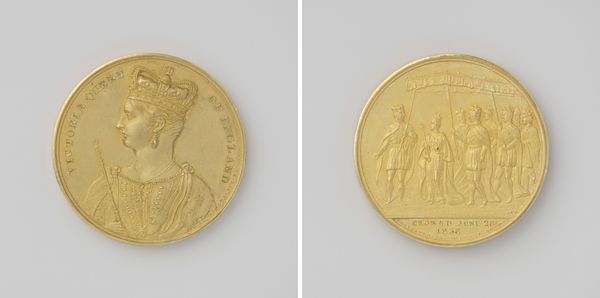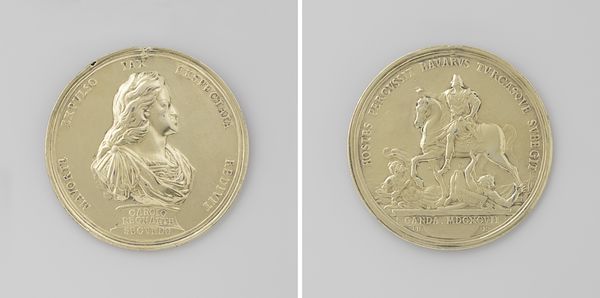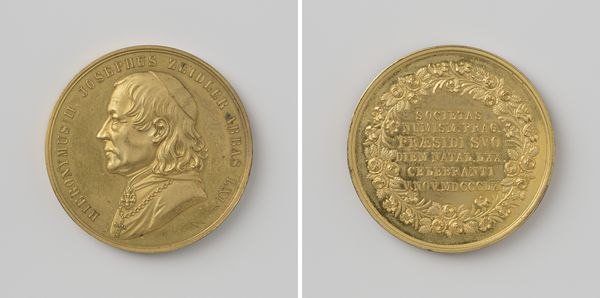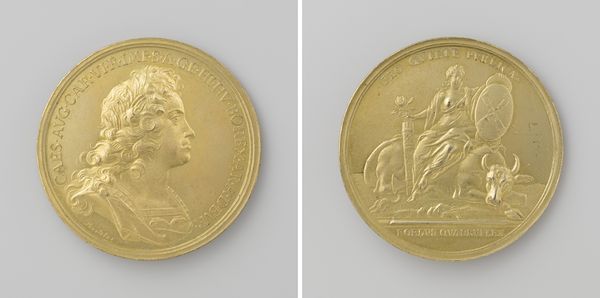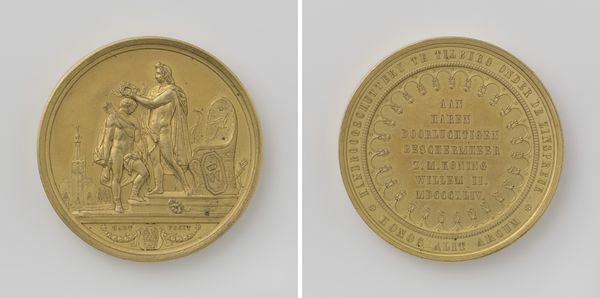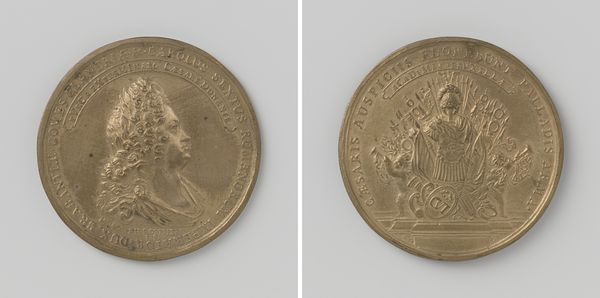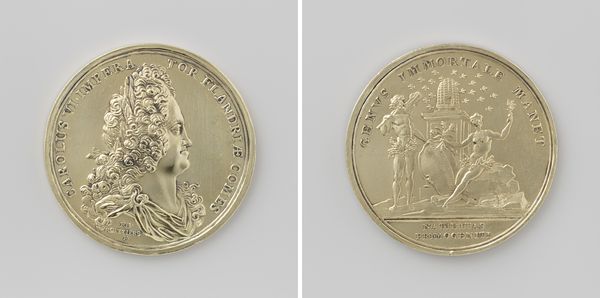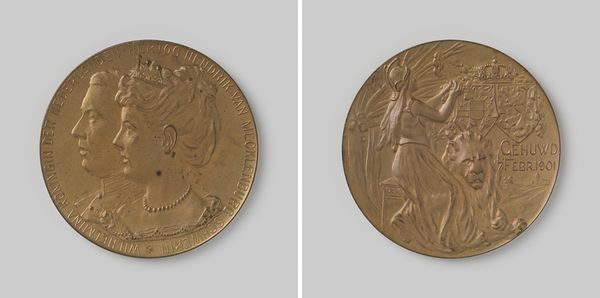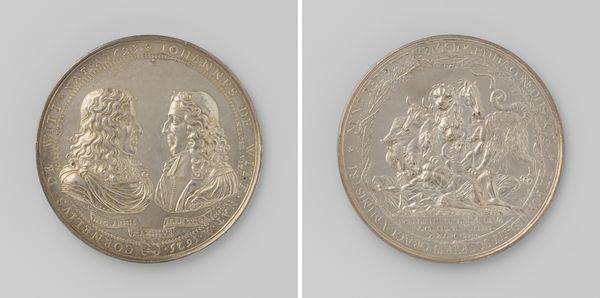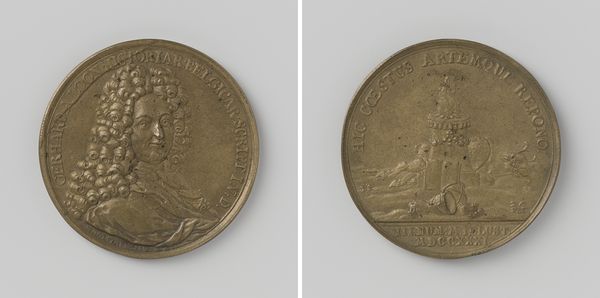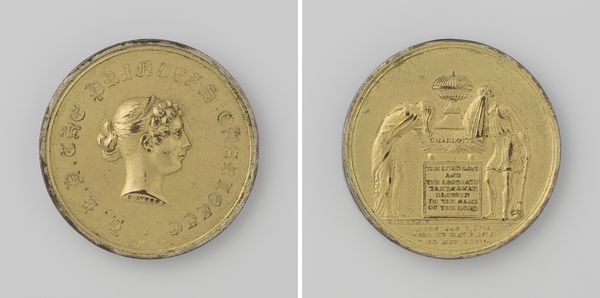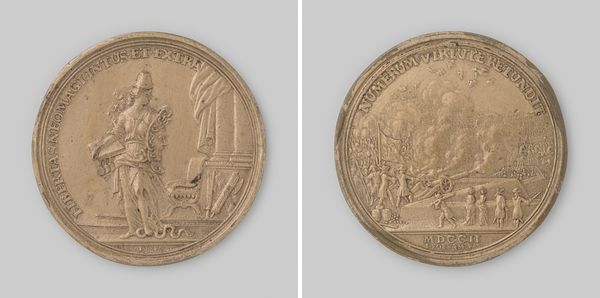
Charles, graaf van Cornwallis, gouverneur-generaal van Bengalen en Indië onderwerpt Tipu Sahib, sultan van Mysore en ontvangt zijn beide zonen als gijzelaars 1792
0:00
0:00
bronze, sculpture, engraving
#
portrait
#
medal
#
neoclacissism
#
bronze
#
sculpture
#
history-painting
#
engraving
Dimensions: diameter 4.8 cm, weight 64.53 gr
Copyright: Rijks Museum: Open Domain
Curator: Here we have a bronze medal from 1792 by Conrad Heinrich Küchler. The inscription declares that it represents "Charles, graaf van Cornwallis, gouverneur-generaal van Bengalen en Indië onderwerpt Tipu Sahib, sultan van Mysore en ontvangt zijn beide zonen als gijzelaars.” Quite a mouthful, isn't it? Editor: Yes, quite a loaded image, too. It has an air of solemn triumph, almost a theatrical tableau frozen in bronze. A little chilling, actually, considering what the scene depicts. Curator: Precisely. Küchler meticulously arranges the figures to underscore the power dynamics at play. Note the rigid composition, the careful balance—Cornwallis is positioned centrally, bathed in metaphorical light, while Tipu Sahib's sons are literally brought to their knees. The visual language evokes neoclassical ideals. Editor: I see it. Everything’s so deliberately posed. The figures look like they're acting in a play—all gestures and high drama, with just a whisper of humanity in the bowed heads of the children. It feels like pure propaganda, even now. Curator: One can argue that this is very much its purpose. The medal's materiality is significant. Bronze, a durable, valuable material, endows the event with a sense of permanence and legitimacy, broadcasting British colonial power and dominance through the symbolic reduction of conflict. The relief’s flatness and clarity enhance the legibility of the propaganda. Editor: Propaganda frozen in time and metal... I think what haunts me most is the thought of the artist, Küchler, crafting this narrative. Did he believe it? Did he question the ethics? And the recipient of this medal—what did they see when they held it in their hand? Did they think about the boys, or only their victory? Curator: Such details of intent will forever elude us, though the medal stands as a complex, multi-layered testament to history's winners. By focusing on these deliberate aesthetic choices we start to see and to challenge its inherent presumptions. Editor: A disturbing and fascinating artifact. Definitely offers much to think about concerning history, perspective, and art's complicated relationship with power.
Comments
No comments
Be the first to comment and join the conversation on the ultimate creative platform.
